Posts Tagged: Art Journal
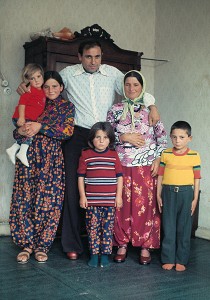
Candida Höfer’s Türken in Deutschland as “Counter-publicity”
By Amy A. DaPonte
Millions of Turkish immigrants settled in Germany after World War II to answer the call of politicians who needed to refresh the labor force after the war. Images of Turks at work or leisure in the parks, homes, markets, shops, and bars of 1970s West German cities populate Candida Höfer’s large, multiformat series entitled Türken in Deutschland (Turks in Germany, 1972–79).

Candida Höfer’s Türken in Deutschland as “Counter-publicity”
By Amy A. DaPonte
Millions of Turkish immigrants settled in Germany after World War II to answer the call of politicians who needed to refresh the labor force after the war. Images of Turks at work or leisure in the parks, homes, markets, shops, and bars of 1970s West German cities populate Candida Höfer’s large, multiformat series entitled Türken in Deutschland (Turks in Germany, 1972–79).
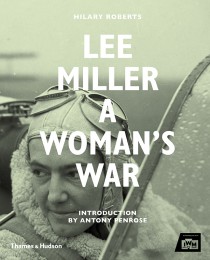
Lee Miller, Challenging Convention
By Lauren Richman
Lauren Richman reviews Hilary Roberts, ed., Lee Miller: A Woman’s War, and the exhibition Lee Miller: A Woman’s War, and Walter Moser and Klaus Albrecht Schröder, eds., Lee Miller, and the exhibition Lee Miller, aka Lee Miller—Photographs and The Indestructible Lee Miller

Lee Miller, Challenging Convention
By Lauren Richman
Lauren Richman reviews Hilary Roberts, ed., Lee Miller: A Woman’s War, and the exhibition Lee Miller: A Woman’s War, and Walter Moser and Klaus Albrecht Schröder, eds., Lee Miller, and the exhibition Lee Miller, aka Lee Miller—Photographs and The Indestructible Lee Miller
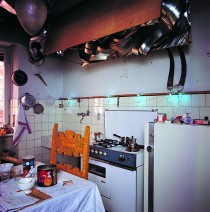
Solitary/Solidary: Mario Merz’s Autonomous Artist
By Elizabeth Mangini
In 1968, while demonstrating students occupied university buildings less than a mile away, the Italian artist Mario Merz hung a handful of neon lights bent into the numerals 1, 1, 2, 3, and 5 above the kitchen stove in his home on Via Santa Giulia in Turin. It wasn’t yet an artwork, just something to think about in the place where he and his wife, fellow artist Marisa Merz, gathered to talk with each other and with friends.

Solitary/Solidary: Mario Merz’s Autonomous Artist
By Elizabeth Mangini
In 1968, while demonstrating students occupied university buildings less than a mile away, the Italian artist Mario Merz hung a handful of neon lights bent into the numerals 1, 1, 2, 3, and 5 above the kitchen stove in his home on Via Santa Giulia in Turin. It wasn’t yet an artwork, just something to think about in the place where he and his wife, fellow artist Marisa Merz, gathered to talk with each other and with friends.

Art-Science: An Annotated Bibliography
By Roger F. Malina
We are witnessing a resurgence of creative and scholarly work that seeks to bridge science and engineering with the arts, design, and the humanities. These practices connect both the arts and sciences, hence the term art-science, and the arts and the engineering sciences and technology, hence the term “art and technology.”

Art-Science: An Annotated Bibliography
By Roger F. Malina
We are witnessing a resurgence of creative and scholarly work that seeks to bridge science and engineering with the arts, design, and the humanities. These practices connect both the arts and sciences, hence the term art-science, and the arts and the engineering sciences and technology, hence the term “art and technology.”
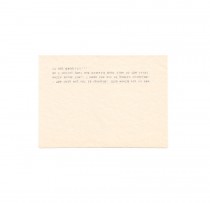
no water, Athens, Greece, 2015: Twenty-four hours with nothing to eat or drink, only smelling the jasmine
By Penelope Vlassopoulou
Penelope Vlassopoulou began her Metamorphosis series in her home city of Athens. The series evolved in multidisciplinary dialogue with diverse urban environments including Berlin, Belgrade, and Chicago. In March 2015, Metamorphosis returned to its point of origin with no water tracing a link between Greece’s historical past and the country’s current predicament.

no water, Athens, Greece, 2015: Twenty-four hours with nothing to eat or drink, only smelling the jasmine
By Penelope Vlassopoulou
Penelope Vlassopoulou began her Metamorphosis series in her home city of Athens. The series evolved in multidisciplinary dialogue with diverse urban environments including Berlin, Belgrade, and Chicago. In March 2015, Metamorphosis returned to its point of origin with no water tracing a link between Greece’s historical past and the country’s current predicament.

Space Travel: Trisha Brown’s Locus
By Amanda Jane Graham
In 1974 the choreographer Trisha Brown moved to 541 Broadway in SoHo, New York City. The cast-iron “nexus” for postmodern dance, commonly referred to as “the dance building,” had what the former Brown company dancer Elizabeth Garren describes as a “communal atmosphere.” Purchased and renovated by the Fluxus founder George Maciunas “with dancers in mind,” 541 was wider than the majority of the standard buildings in the neighborhood, and more important, it contained no interior pillars, making it an ideal choreographic work space.

Space Travel: Trisha Brown’s Locus
By Amanda Jane Graham
In 1974 the choreographer Trisha Brown moved to 541 Broadway in SoHo, New York City. The cast-iron “nexus” for postmodern dance, commonly referred to as “the dance building,” had what the former Brown company dancer Elizabeth Garren describes as a “communal atmosphere.” Purchased and renovated by the Fluxus founder George Maciunas “with dancers in mind,” 541 was wider than the majority of the standard buildings in the neighborhood, and more important, it contained no interior pillars, making it an ideal choreographic work space.

Troubling Troublemakers
By Chris Taylor
Chris Taylor reviews Troublemakers: The Story of Land Art (2015), written and directed by James Crump.

Troubling Troublemakers
By Chris Taylor
Chris Taylor reviews Troublemakers: The Story of Land Art (2015), written and directed by James Crump.
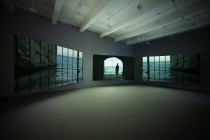
Small Boats, Slave Ship; or, Isaac Julien and the Beauty of Implied Catastrophe
By Emma Chubb
Three horizontal screens stretch across two gallery walls, suspended from the ceiling and hung in a slight arc. At first, the two flanking screens remain dark and only the center screen is illuminated. It shows an expanse of blue water, waves rippling with gold and reflecting the setting sun as they gently curl forward onto a barely visible beach.

Small Boats, Slave Ship; or, Isaac Julien and the Beauty of Implied Catastrophe
By Emma Chubb
Three horizontal screens stretch across two gallery walls, suspended from the ceiling and hung in a slight arc. At first, the two flanking screens remain dark and only the center screen is illuminated. It shows an expanse of blue water, waves rippling with gold and reflecting the setting sun as they gently curl forward onto a barely visible beach.
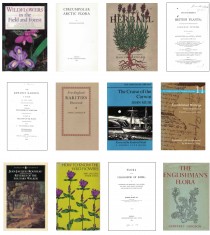
The Arctic Plants of New York City: An Annotated Bibliography
By James Walsh
I’ve been working since 2008 on a long, complex project centered on plants that grow in both the arctic (I always use the lowercase) and New York City, of which there are a surprising number. Along with identifying and pressing these plants, I’ve been reading eighteenth-century herbals and floras and more recent works on edible plants and botany generally, and have had a particular interest in mental travel and in writers who combine botany and literature.

The Arctic Plants of New York City: An Annotated Bibliography
By James Walsh
I’ve been working since 2008 on a long, complex project centered on plants that grow in both the arctic (I always use the lowercase) and New York City, of which there are a surprising number. Along with identifying and pressing these plants, I’ve been reading eighteenth-century herbals and floras and more recent works on edible plants and botany generally, and have had a particular interest in mental travel and in writers who combine botany and literature.
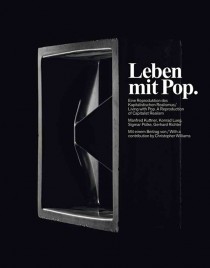
Leaving Düsseldorf
By Godfre Leung
Godfre Leung reviews Sabine Breitwieser, Laura J. Hoptman, Michael Darling, and Jeffrey D. Grove, Isa Genzken: Retrospective, and the exhibition Isa Genzken: Retrospective; Kathy Halbreich, ed., Alibis: Sigmar Polke, 1963–2010, and the exhibition Alibis: Sigmar Polke, 1963–2010; and Elodie Evers, Magdalena Holzhey, and Gregor Jansen, eds., Leben mit Pop and the exhibition Leben mit Pop.

Leaving Düsseldorf
By Godfre Leung
Godfre Leung reviews Sabine Breitwieser, Laura J. Hoptman, Michael Darling, and Jeffrey D. Grove, Isa Genzken: Retrospective, and the exhibition Isa Genzken: Retrospective; Kathy Halbreich, ed., Alibis: Sigmar Polke, 1963–2010, and the exhibition Alibis: Sigmar Polke, 1963–2010; and Elodie Evers, Magdalena Holzhey, and Gregor Jansen, eds., Leben mit Pop and the exhibition Leben mit Pop.
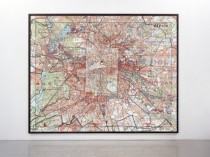
Against Infographics
By Daniel Rosenberg
When design is excellent, graphics reveal data, writes the infographics guru Edward Tufte. Good information graphics allow the reader to see relationships not apparent in data without visual form. In principle, such graphics do not impose interpretations but, by showing relationships, make interpretations possible.

Against Infographics
By Daniel Rosenberg
When design is excellent, graphics reveal data, writes the infographics guru Edward Tufte. Good information graphics allow the reader to see relationships not apparent in data without visual form. In principle, such graphics do not impose interpretations but, by showing relationships, make interpretations possible.
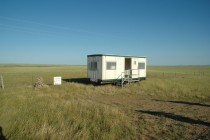
Rewilding: An Emerging History of Common Field
By James McAnally
Common Field was born of a singular moment, a shared time of simmering scarcity matched with an abundance of artist-centric models springing up globally. The emergent network is quickly becoming a central figure within a spectrum of new alternative forms increasingly coming to define a deflated decade.

Rewilding: An Emerging History of Common Field
By James McAnally
Common Field was born of a singular moment, a shared time of simmering scarcity matched with an abundance of artist-centric models springing up globally. The emergent network is quickly becoming a central figure within a spectrum of new alternative forms increasingly coming to define a deflated decade.
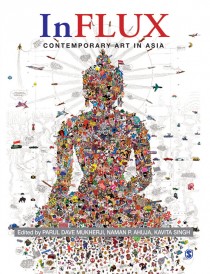
Barbarians at the Gates: Contemporary Art and Globalization in Asia
By Sonal Khullar
Sonal Khullar reviews InFlux: Contemporary Art in Asia edited by Parul Dave-Mukherji, Naman P. Ahuja, and Kavita Singh.

Barbarians at the Gates: Contemporary Art and Globalization in Asia
By Sonal Khullar
Sonal Khullar reviews InFlux: Contemporary Art in Asia edited by Parul Dave-Mukherji, Naman P. Ahuja, and Kavita Singh.

Yoga for Adjuncts: The Somatics of Human Capital
By Christian Nagler
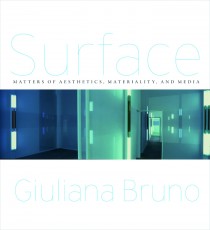
Superficial Thinking: Screen Practices and Screen Architectures
By Swagato Chakravorty
Swagato Chakravorty reviews Surface: Matters of Aesthetics, Materiality, and Media by Giuliana Bruno.

Superficial Thinking: Screen Practices and Screen Architectures
By Swagato Chakravorty
Swagato Chakravorty reviews Surface: Matters of Aesthetics, Materiality, and Media by Giuliana Bruno.
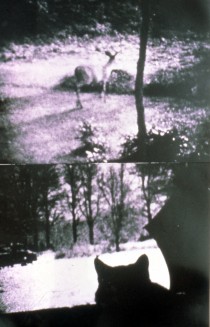
“The Cat Is My Medium”: Notes on the Writing and Art of Carolee Schneemann
By Thyrza Nichols Goodeve
For several years, Carolee Schneemann has presented an ever-evolving performative lecture about her work, starting with drawings she made at the ages of four and seven. I first saw it in 2009 at St. Mark’s Church.

“The Cat Is My Medium”: Notes on the Writing and Art of Carolee Schneemann
By Thyrza Nichols Goodeve
For several years, Carolee Schneemann has presented an ever-evolving performative lecture about her work, starting with drawings she made at the ages of four and seven. I first saw it in 2009 at St. Mark’s Church.

Not Getting There Is Half the Fun: Holidays with Freud
By Elizabeth Legge
Elizabeth Legge reviews Sharon Kivland’s Freud on Holiday series.

Not Getting There Is Half the Fun: Holidays with Freud
By Elizabeth Legge
Elizabeth Legge reviews Sharon Kivland’s Freud on Holiday series.

In, Around, and Afterthoughts (On Participation): Photography and Agency in Martha Rosler’s Collaboration with Homeward Bound
By Adair Rounthwaite
It seems obvious to state that photographs play a central role in our ability to study participatory art. Art historians, however, have largely bracketed this as an issue that might be important for how we conceive the politics and aesthetics of participation.

In, Around, and Afterthoughts (On Participation): Photography and Agency in Martha Rosler’s Collaboration with Homeward Bound
By Adair Rounthwaite
It seems obvious to state that photographs play a central role in our ability to study participatory art. Art historians, however, have largely bracketed this as an issue that might be important for how we conceive the politics and aesthetics of participation.

Transnational Fields and the Blindness of the Archive
By Dorota Biczel
Dorota Biczel reviews Making Art Panamerican: Cultural Policy and the Cold War by Claire F. Fox.

Transnational Fields and the Blindness of the Archive
By Dorota Biczel
Dorota Biczel reviews Making Art Panamerican: Cultural Policy and the Cold War by Claire F. Fox.
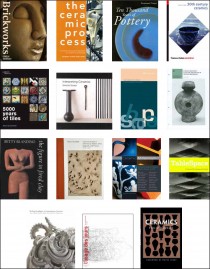
Primal Matter: An Annotated Bibliography for Ceramics
By Brian Molanphy
This introductory selection of texts on ceramics includes books that offer general foundations as well as essays that exemplify specific investigations.

Primal Matter: An Annotated Bibliography for Ceramics
By Brian Molanphy
This introductory selection of texts on ceramics includes books that offer general foundations as well as essays that exemplify specific investigations.

Objects Made Black
by Sampada Aranke
Sampada Aranke reviews Bound to Appear: Art, Slavery, and the Site of Blackness in Multicultural America by Huey Copeland.

Objects Made Black
by Sampada Aranke
Sampada Aranke reviews Bound to Appear: Art, Slavery, and the Site of Blackness in Multicultural America by Huey Copeland.

Dead Boars, Viruses, and Zombies: Roberto Jacoby’s Art History
By Daniel R. Quiles
The subtlest of deceptions lies in wait in a “1000 Words” feature on Roberto Jacoby in the March 2011 issue of Artforum.

Dead Boars, Viruses, and Zombies: Roberto Jacoby’s Art History
By Daniel R. Quiles
The subtlest of deceptions lies in wait in a “1000 Words” feature on Roberto Jacoby in the March 2011 issue of Artforum.
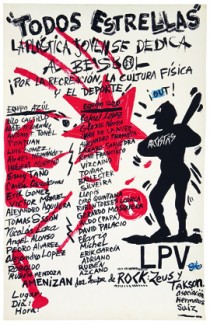
Nueve entradas en 1989
By Tamara Díaz Bringas
Playball, habría dicho el umpire para iniciar aquel partido de béisbol con tantos artistas y ningún pelotero. Playball, habrían oído los jugadores, sospechando tal vez que el juego había empezado en verdad mucho antes de aquel 24 de septiembre de 1989.

Nueve entradas en 1989
By Tamara Díaz Bringas
Playball, habría dicho el umpire para iniciar aquel partido de béisbol con tantos artistas y ningún pelotero. Playball, habrían oído los jugadores, sospechando tal vez que el juego había empezado en verdad mucho antes de aquel 24 de septiembre de 1989.
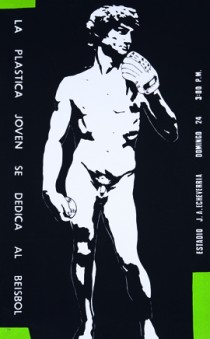
Nine Innings in 1989
By Tamara Díaz Bringas
“Play ball!” the umpire would have said to start that baseball game with so many artists and not a single ballplayer. “Play ball!” the players would have heard, perhaps suspecting that the game had really begun long before that 24th of September in 1989.

Nine Innings in 1989
By Tamara Díaz Bringas
“Play ball!” the umpire would have said to start that baseball game with so many artists and not a single ballplayer. “Play ball!” the players would have heard, perhaps suspecting that the game had really begun long before that 24th of September in 1989.
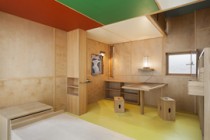
Between Ecology and Looking Back: Environment and Revisionism in Le Corbusier: An Atlas of Modern Landscapes
Charissa N. Terranova reviews Le Corbusier: An Atlas of Modern Landscapes.

Between Ecology and Looking Back: Environment and Revisionism in Le Corbusier: An Atlas of Modern Landscapes
Charissa N. Terranova reviews Le Corbusier: An Atlas of Modern Landscapes.

The Aesthetic Gold of a Ravished Spouse of the Godhead
By Elisabeth Kley
Although mystery has surrounded the life of Forrest Bess since he died in 1977, quite a bit of the cloud is dispelled in Chuck Smith’s new book, Forrest Bess: Key to the Riddle. A follow-up to a film Smith made in 1999, it is an ideal combination of monograph and biography.

The Aesthetic Gold of a Ravished Spouse of the Godhead
By Elisabeth Kley
Although mystery has surrounded the life of Forrest Bess since he died in 1977, quite a bit of the cloud is dispelled in Chuck Smith’s new book, Forrest Bess: Key to the Riddle. A follow-up to a film Smith made in 1999, it is an ideal combination of monograph and biography.
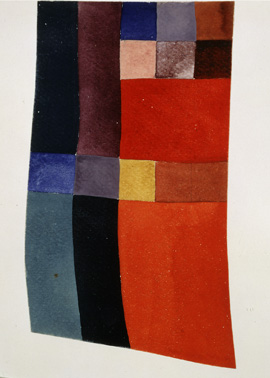
Dada Dance: Sophie Taeuber’s Visceral Abstraction
By Nell Andrew
In a recent landmark exhibition on the intersection of art and dance, Danser sa vie, the Centre Georges Pompidou displayed an enigmatic photograph identified as the artist Sophie Taeuber dancing at the Cabaret Voltaire in 1916. It is not uncommon for a photograph to stand in as an icon of a live event and offer what we hope is access to some present now passed, but for decades scholars have disagreed on the date and location of the Taeuber photograph.

Dada Dance: Sophie Taeuber’s Visceral Abstraction
By Nell Andrew
In a recent landmark exhibition on the intersection of art and dance, Danser sa vie, the Centre Georges Pompidou displayed an enigmatic photograph identified as the artist Sophie Taeuber dancing at the Cabaret Voltaire in 1916. It is not uncommon for a photograph to stand in as an icon of a live event and offer what we hope is access to some present now passed, but for decades scholars have disagreed on the date and location of the Taeuber photograph.

Through the Looking-Glass, Darkly
By Tina Rivers
When H. H. Arnason published the first edition of his 1968 book The History of Modern Art, it ended with a one-page entry on “Psychedelic Art.” Positioning the inchoate movement as a bridge between the modern and contemporary periods, the entry was a blueprint for a future that would never come to pass, and was expunged from all further editions, helping to relegate psychedelia to the proverbial dustbin of history.

Through the Looking-Glass, Darkly
By Tina Rivers
When H. H. Arnason published the first edition of his 1968 book The History of Modern Art, it ended with a one-page entry on “Psychedelic Art.” Positioning the inchoate movement as a bridge between the modern and contemporary periods, the entry was a blueprint for a future that would never come to pass, and was expunged from all further editions, helping to relegate psychedelia to the proverbial dustbin of history.

Queer Formalisms: Jennifer Doyle and David Getsy in Conversation
By Jennifer Doyle and David Getsy
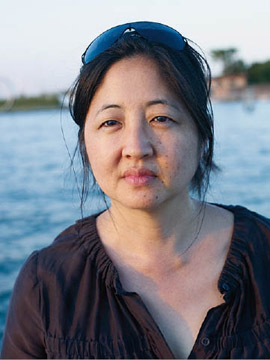
Karin Higa: A Collage of Remembrances
Well before I met Karin Higa, I knew of her as a curator of Asian American art, a prominent voice in the contemporary art world, and an author whose writings I frequently assigned to students.

Karin Higa: A Collage of Remembrances
Well before I met Karin Higa, I knew of her as a curator of Asian American art, a prominent voice in the contemporary art world, and an author whose writings I frequently assigned to students.

“A Clear Day and No Memories”: Neurology, Philosophy, and Analogy in Kerry Tribe’s H.M.
By Matthew Goulish
In order to begin I must tell a horror story. I will try to mitigate the horror, through accuracy of telling, through facts, and through a degree of humility before them. Yet I will acknowledge it. I mean I already have. Horror is not fact.

“A Clear Day and No Memories”: Neurology, Philosophy, and Analogy in Kerry Tribe’s H.M.
By Matthew Goulish
In order to begin I must tell a horror story. I will try to mitigate the horror, through accuracy of telling, through facts, and through a degree of humility before them. Yet I will acknowledge it. I mean I already have. Horror is not fact.

Modernism, Essentialism, and “Racial Art” in America
By Amy Lyford
It is exciting to read two books that demonstrate the power, impact, and necessity of art history’s engagement with critical race studies—especially in the context of scholarship on modernist American art.

Modernism, Essentialism, and “Racial Art” in America
By Amy Lyford
It is exciting to read two books that demonstrate the power, impact, and necessity of art history’s engagement with critical race studies—especially in the context of scholarship on modernist American art.

Sharing an Archive of Feelings: A Conversation
By Tammy Rae Carland and Ann Cvetkovich
As I remember, we met in 1995 in Portland, Oregon, through our musician girlfriends. I had just finished graduate school and had gone to New York, to the Whitney Independent Study Program, and I was about to be deployed, which is the way I think about it, to my first teaching job in the middle of Indiana.

Sharing an Archive of Feelings: A Conversation
By Tammy Rae Carland and Ann Cvetkovich
As I remember, we met in 1995 in Portland, Oregon, through our musician girlfriends. I had just finished graduate school and had gone to New York, to the Whitney Independent Study Program, and I was about to be deployed, which is the way I think about it, to my first teaching job in the middle of Indiana.
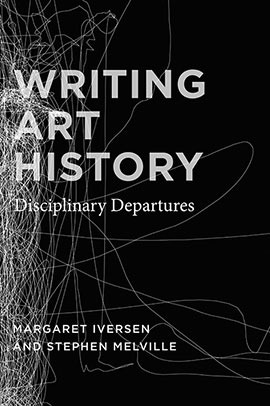
Where Do We Come From? What Are We? Where Are We Going?
By Sarah Betzer
Spurred by global economic contractions, by the attention of politicians, legislators, and pundits, and certainly also by the historical curiosity and critical orientation of its ranks, the academy at present is in the thrall of self-scrutiny. What is the past, present, and future of the research university, an invention of stunningly recent vintage and yet of remarkable structural resilience?

Where Do We Come From? What Are We? Where Are We Going?
By Sarah Betzer
Spurred by global economic contractions, by the attention of politicians, legislators, and pundits, and certainly also by the historical curiosity and critical orientation of its ranks, the academy at present is in the thrall of self-scrutiny. What is the past, present, and future of the research university, an invention of stunningly recent vintage and yet of remarkable structural resilience?
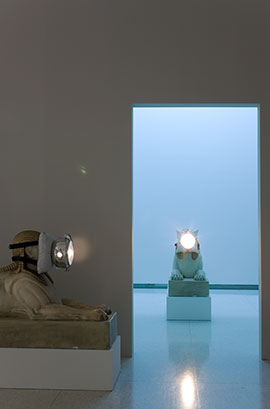
If It Need Be Termed Surrender: Trisha Donnelly’s Subjunctive Case
By Michael Jay McClure
Allow for a problem within contemporary art, a problem concerning emptiness. After experiencing and writing on installations that, say, immersed me in cave systems, faux-hospitals, or forests, after navigating landscapes of fur or video labyrinths, I found myself, often, elsewhere. A group of contemporary installations seemed overwhelmingly spare, a few small objects, and I began to wonder what such a shift of spatial tenancy meant.

If It Need Be Termed Surrender: Trisha Donnelly’s Subjunctive Case
By Michael Jay McClure
Allow for a problem within contemporary art, a problem concerning emptiness. After experiencing and writing on installations that, say, immersed me in cave systems, faux-hospitals, or forests, after navigating landscapes of fur or video labyrinths, I found myself, often, elsewhere. A group of contemporary installations seemed overwhelmingly spare, a few small objects, and I began to wonder what such a shift of spatial tenancy meant.
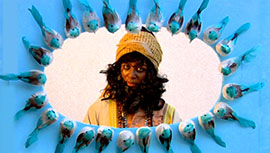
Precarious Symbolism: When the Political Sphere Overshadows Art History
By Maymanah Farha
As the methodical beat of a handheld drum begins to pound, a bearded, turbaned figure is shown lying on a bare floor. Overcome by emotional agony, he moves as though waking from a trance. A mane of dark hair frames his painted face as the camera zooms in and his melodic eulogy to lost love commences.

Precarious Symbolism: When the Political Sphere Overshadows Art History
By Maymanah Farha
As the methodical beat of a handheld drum begins to pound, a bearded, turbaned figure is shown lying on a bare floor. Overcome by emotional agony, he moves as though waking from a trance. A mane of dark hair frames his painted face as the camera zooms in and his melodic eulogy to lost love commences.
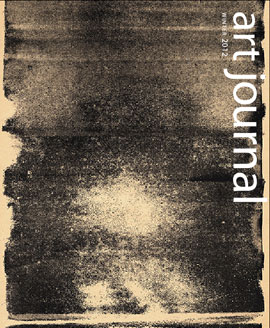
Shaping the Glass
By Katy Siegel
Life is not an idea, but ideas are part of life. Thinking is the only way out of our enmities and miseries. Vision—seeing better and more freshly, with less habit and personal bias—awakens us to life.

Shaping the Glass
By Katy Siegel
Life is not an idea, but ideas are part of life. Thinking is the only way out of our enmities and miseries. Vision—seeing better and more freshly, with less habit and personal bias—awakens us to life.
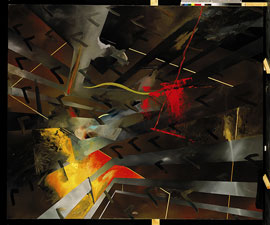
Richter’s Willkür
By Christine Mehring
Following on the heels of his signature photorealist blurs, Gerhard Richter’s abstract paintings have long exemplified a “permanent break in style as principle of style,” as Klaus Honnef noted in the artist’s first retrospective catalogue in 1969.

Richter’s Willkür
By Christine Mehring
Following on the heels of his signature photorealist blurs, Gerhard Richter’s abstract paintings have long exemplified a “permanent break in style as principle of style,” as Klaus Honnef noted in the artist’s first retrospective catalogue in 1969.

Zero at the Bone: Louise Fishman Speaks with Carrie Moyer
By Louise Fishman and Carrie Moyer
This all came to me in the last couple of weeks. In the late 1980s, early 1990s, my partner and I had gone to Madrid to see the big Velázquez retrospective. I’d never been to the Prado. I spent a lot of time looking at the Velázquez and wandering around the museum. Eventually I found Goya’s Black Paintings.

Zero at the Bone: Louise Fishman Speaks with Carrie Moyer
By Louise Fishman and Carrie Moyer
This all came to me in the last couple of weeks. In the late 1980s, early 1990s, my partner and I had gone to Madrid to see the big Velázquez retrospective. I’d never been to the Prado. I spent a lot of time looking at the Velázquez and wandering around the museum. Eventually I found Goya’s Black Paintings.

The Terms of Craft and Other Means of Making: Lee Bontecou’s Hybrid Trajectory
By Elyse Speaks
In 1958 Lee Bontecou began experimenting with a technique for making sculpture based on binding fabric to thin steel frames or armatures. Executed first on a small scale that oscillated between the form of the model and the form of tabletop sculpture, the works were emphatic in their distance from the shape and tenor of the dominant field of welded metal sculpture.

The Terms of Craft and Other Means of Making: Lee Bontecou’s Hybrid Trajectory
By Elyse Speaks
In 1958 Lee Bontecou began experimenting with a technique for making sculpture based on binding fabric to thin steel frames or armatures. Executed first on a small scale that oscillated between the form of the model and the form of tabletop sculpture, the works were emphatic in their distance from the shape and tenor of the dominant field of welded metal sculpture.

Shame: The One That Got Away
By Josephine Halvorson
The nineteenth-century painter Samuel Palmer lived within two hundred yards of the cemetery, making drawings, notes, and paintings in what he called the Valley of Visions in an effort to “bring up a mystic glimmer.” Sinclair, London Orbital Acid rain has eroded the words. Lichens, like Van Gogh blooms in orange and yellow, cling to the mauve stone.

Shame: The One That Got Away
By Josephine Halvorson
The nineteenth-century painter Samuel Palmer lived within two hundred yards of the cemetery, making drawings, notes, and paintings in what he called the Valley of Visions in an effort to “bring up a mystic glimmer.” Sinclair, London Orbital Acid rain has eroded the words. Lichens, like Van Gogh blooms in orange and yellow, cling to the mauve stone.
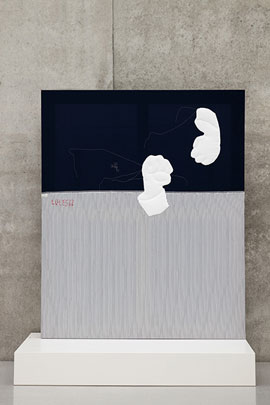
Ground Control: Painting in the Work of Cosima von Bonin
By Gregory H. Williams
During the past decade a steady flow of critical writing on contemporary painting has appeared, much of it seeking to define changes to the practice that have taken place since 1990. In several often-cited essays, a shared theme has emerged in which late-twentieth-century painting is described as undergoing a crisis of containment.

Ground Control: Painting in the Work of Cosima von Bonin
By Gregory H. Williams
During the past decade a steady flow of critical writing on contemporary painting has appeared, much of it seeking to define changes to the practice that have taken place since 1990. In several often-cited essays, a shared theme has emerged in which late-twentieth-century painting is described as undergoing a crisis of containment.


